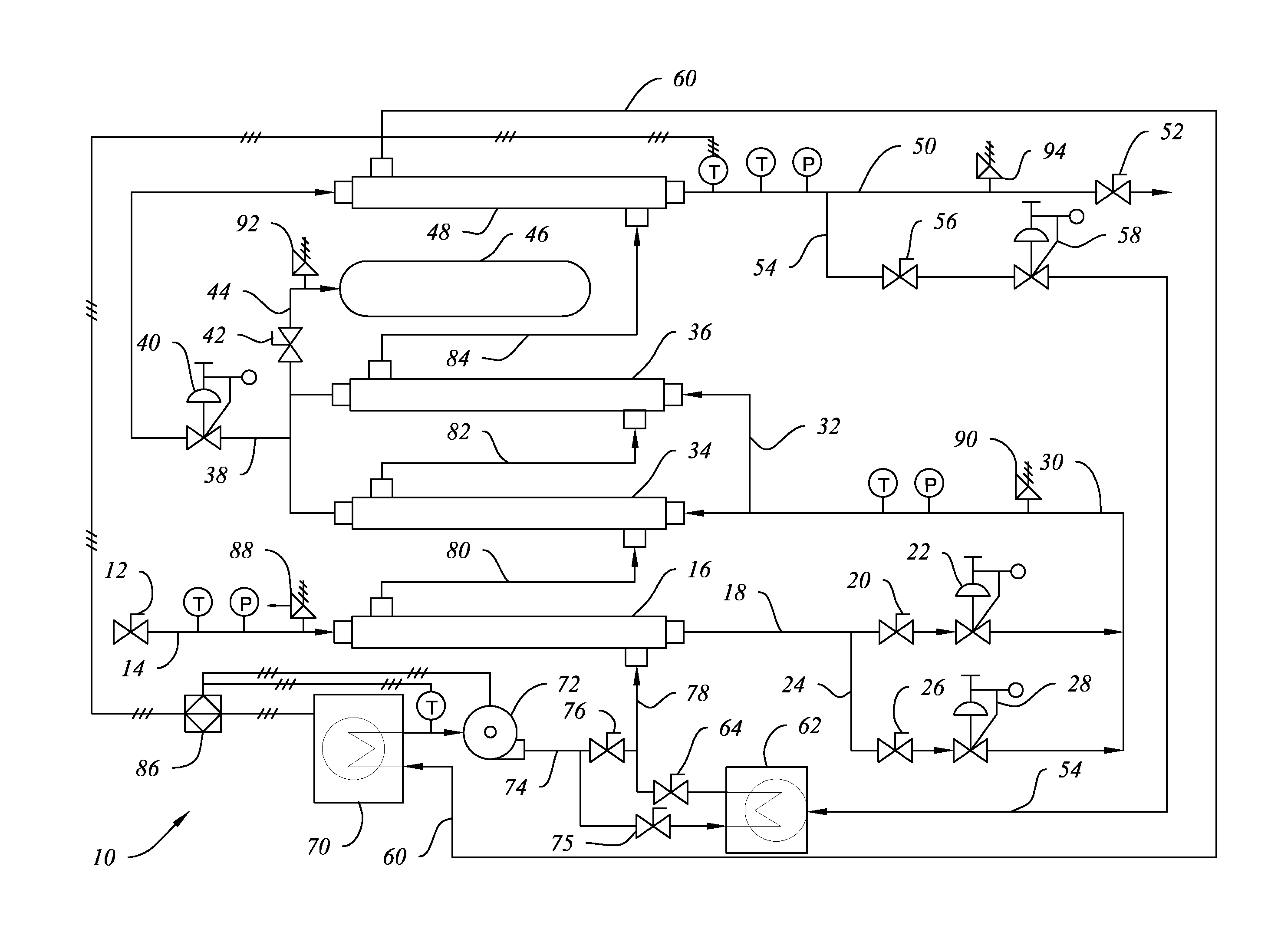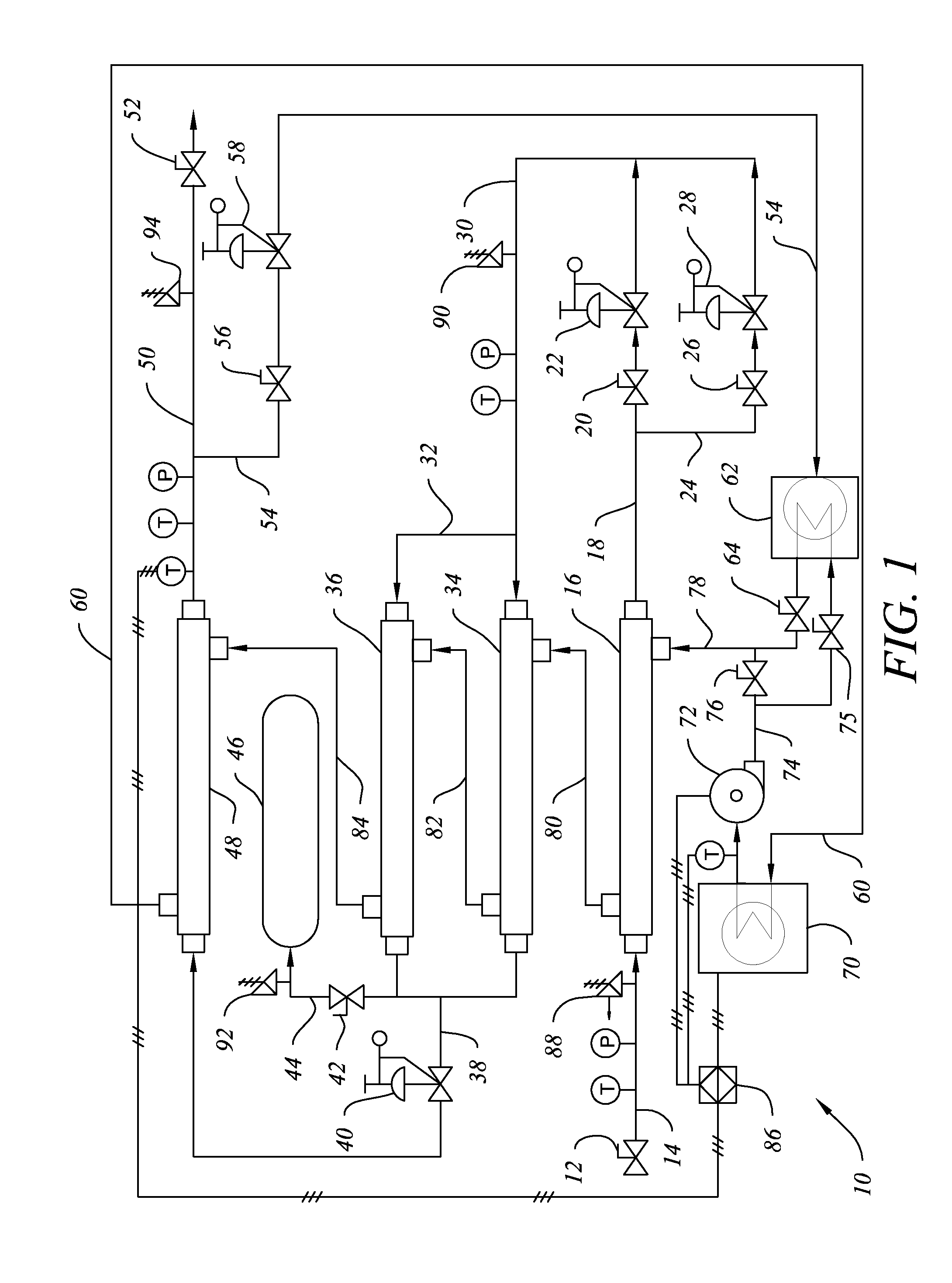System and Method for Unloading Compressed Natural Gas
a compressed natural gas and system technology, applied in the direction of container discharging methods, container filling under pressure, vessel construction details, etc., can solve the problems of affecting the economics of pressurized gas transportation and delivery, pressure, temperature and flow rate can drop even lower, and the operation difficulty of unloading compressed natural gas from transport tanks is often encountered, so as to improve the efficiency of gas transportation, reduce the residual gas pressure, and facilitate the effect of delivery and installation
- Summary
- Abstract
- Description
- Claims
- Application Information
AI Technical Summary
Benefits of technology
Problems solved by technology
Method used
Image
Examples
Embodiment Construction
[0014]System 10 and the method of the invention are further disclosed in relation to FIG. 1 of the drawings. Compressed natural gas (“CNG”) is received into system 10 through inlet valve 12 in flow line 14 at a transport pressure of about 3000 to about 4200 PSI. Pressure relief valve 88 is disposed between inlet valve 12 and heat exchanger 16 to protect system 10 from any gas source in which the gas pressure exceeds the maximum operational pressure for which system 10 is designed, such as, for example, about 4500 PSI. Heat exchanger 16 is desirably a shell and tube heat exchanger designed for use at pressures exceeding the operational pressures disclosed above.
[0015]The CNG is desirably heated to about 105° F. in heat exchanger 16 and, upon exiting the heat exchanger, passes through flow lines 18, 24 and valves 20, 26 to be throttled from the inlet pressure to an intermediate pressure of 300 PSI in one or more automated flow control valves 22, 28. The number of throttle valves is de...
PUM
 Login to View More
Login to View More Abstract
Description
Claims
Application Information
 Login to View More
Login to View More - R&D
- Intellectual Property
- Life Sciences
- Materials
- Tech Scout
- Unparalleled Data Quality
- Higher Quality Content
- 60% Fewer Hallucinations
Browse by: Latest US Patents, China's latest patents, Technical Efficacy Thesaurus, Application Domain, Technology Topic, Popular Technical Reports.
© 2025 PatSnap. All rights reserved.Legal|Privacy policy|Modern Slavery Act Transparency Statement|Sitemap|About US| Contact US: help@patsnap.com


